Google Instant – Putting The Chunky Middle On A Diet?

When Google announced their new instant search results a few weeks ago (September 8, to be exact) a lot of search marketers made various hypotheses. There were the typical doom-and-gloom, SEO is dead posts from those seeking attention by using controversy as a link bait tactic. Then there were the more level headed responses questioning whether long-tail traffic would increase, decrease, or stay the more or less the same. Now that we’ve been living in a Google instant world for a few weeks, I wanted to take a look at the data to see if any trends were really starting to emerge.
The Details
Number of sites: I looked at 24 sites, ranging in size from small (900 monthly visits) to large (2.4 million monthly visits) and everything in between. The average monthly visits for all sites was 190,250.
Time Frame: I compared 23 days of pre-Google Instant (Wednesday, Aug. 11 – Thursday, Sept. 2) to 23 days post-Google Instant (Wednesday, Sept. 8 – Thursday Sept. 30).
Total number of visits and keywords: During that time frame, there were 3,182,487 visits from 1,197,374 keywords.
The Numbers
I looked at two main metrics, percentage of search visits from keywords of a given length and percentage of keywords of a given length. Then I segmented those metrics by total organic search and non-branded organic search. First up, the total organic search numbers:
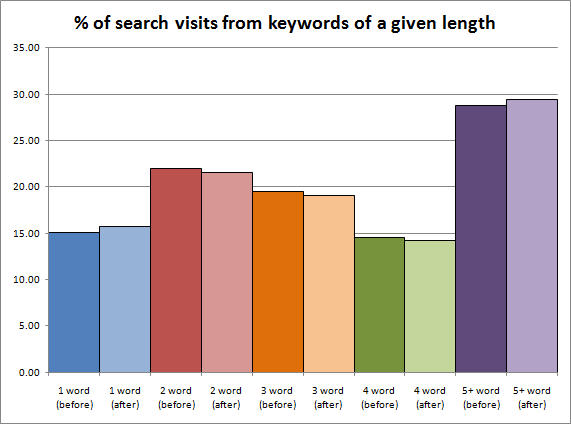
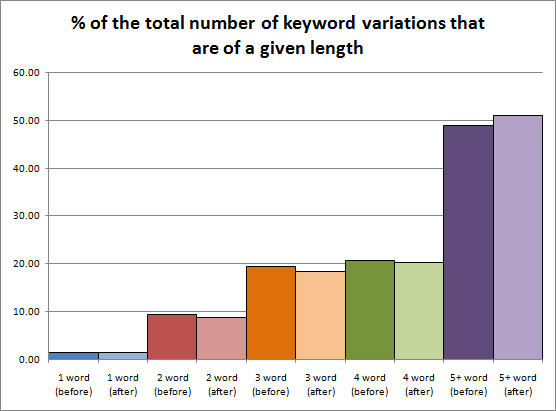
So far, nothing too drastic seems to be happening. One-word searches (the head terms) and 5+ word searches (the tail terms) seem to be edging out the 2, 3, and 4-word searches (the chunky middle). But I’m not running for the hills just yet. Let’s change channels now to look at just the non-branded search visits and keywords.
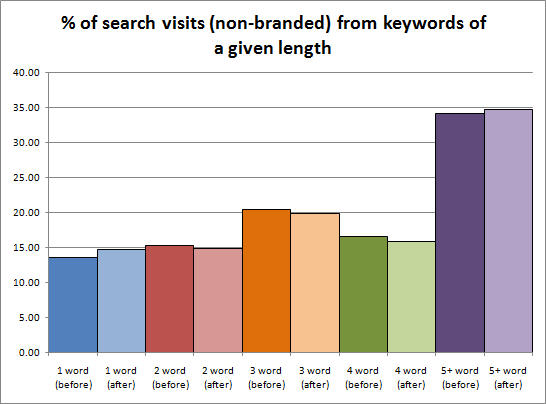
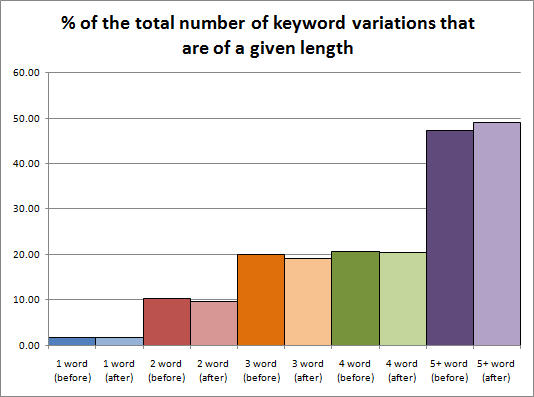
Again, no clear conclusions that point to the death of the long-tail here. If anything, the data (as limited as it is after only three weeks) points to a very slight increase in the tail.
Aside: if you want to learn how to see visits in Google Analytics by keyword length, read John’s post on Keyword Analysis by Number of Terms (and the RegEx That Helps). In short, you can use the following regular expression in the keyword filter field: ^(W*w+bW*){1}$ where the number within the curly braces is the number of keywords in the search term.
One other thing that I looked at was the share of search of the top 3 search engines. Particularly, I wanted to see if Google’s share of search increased or decreased – did people hate it enough to switch to Bing/Yahoo? Here’s the aggregated data:
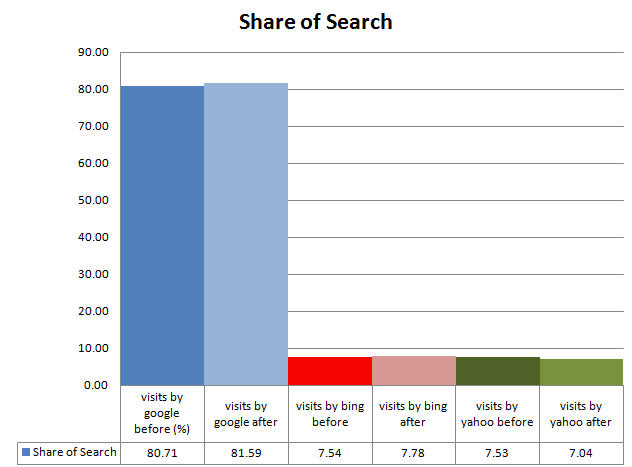
Google’s share of search increased by nearly 1%, but those numbers actually hide some of the nuances of particular sites and industries. For example, one site saw Google’s share of search increase from 71% to 80.39%, while another site saw it decrease from 72.04% to 68.1%. Although there were a few sites that saw those kinds of significant shifts, for most sites they remained relatively unchanged.
Your Turn…
Have you seen any changes since Google Instant? Have I missed anything? Let me know in the comments!
| 3,182,487 |


